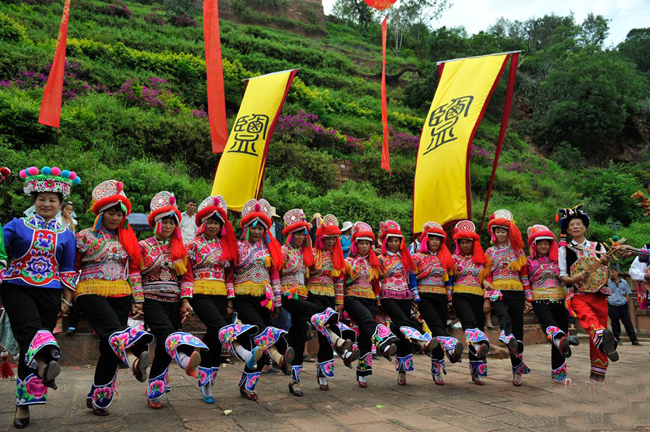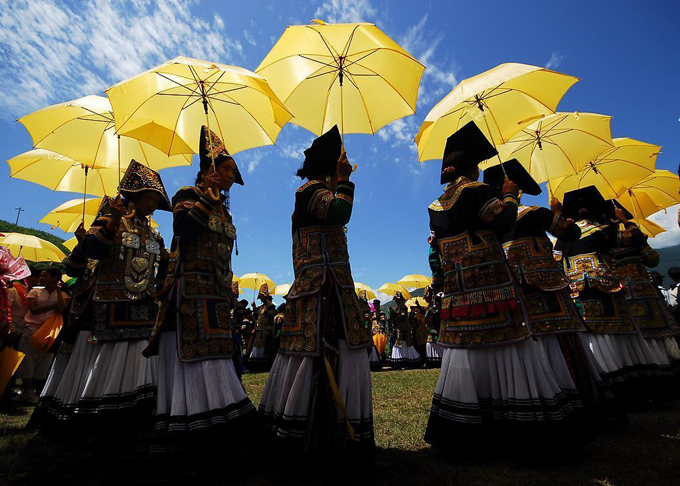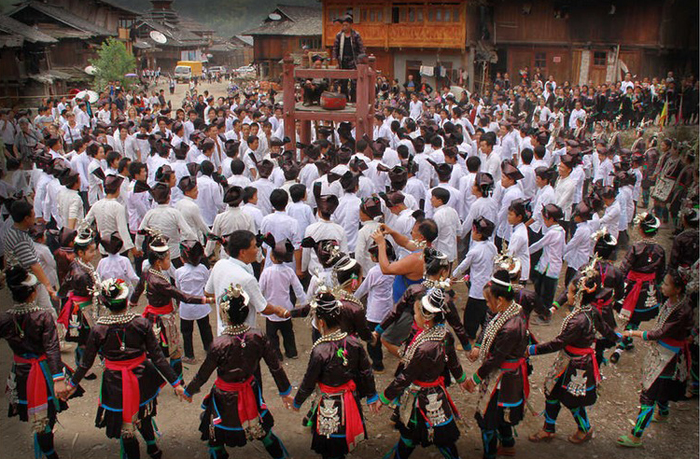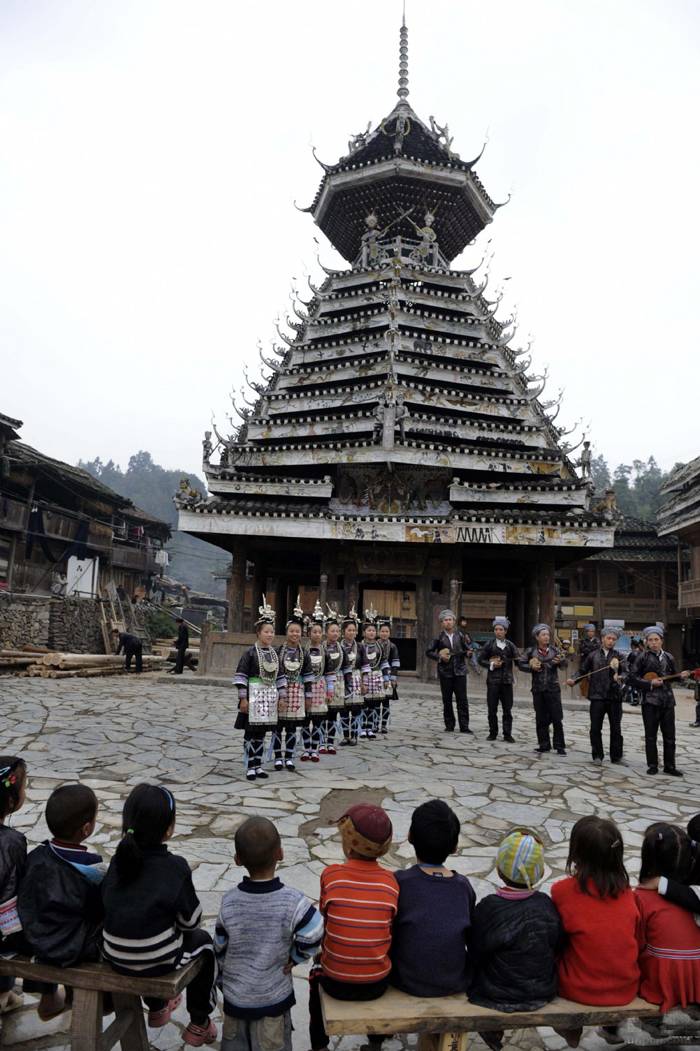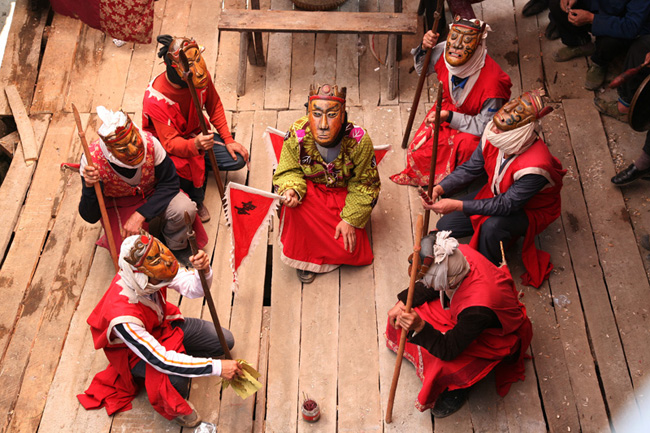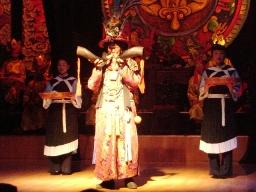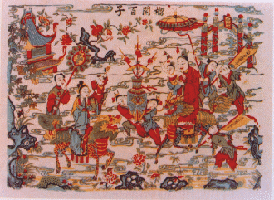Zhuang People Introduction
2015-09-10 17:58:34 Author:culture Source:National culture Browse number:0 Comment 0 A
Among the 55 ethnic groups in China, Zhuang Nationality boasts the largest population. By 2010, there are 16,926,381 Zhuang people, which take up 1.2700% of the whole Chinese population. They are mainly found in Guangxi, Yunnan, Guangdong and Guizhou province.
Population
Among the 55 ethnic groups in China, Zhuang Nationality boasts the largest population. By 2010, there are 16,926,381 Zhuang people, which take up 1.2700% of the whole Chinese population. They are mainly found in Guangxi, Yunnan, Guangdong and Guizhou province. Zhuang people reside in south China Karst areas, such as Guilin and live on rice cultivation and fishing.
Distribution
Language, Script and Religion
Zhuang language belongs to Zhuang-Dai branch of Zhuang-Dong Austronesian. It splits into two dialects. The year 1957 saw Zhuang people have their own script, which is based on the Latin alphabet. Zhuang people are polytheists, they believe in Buddhism, Taoism, Protestantism and Catholicism. Besides, witchcraft, ancestral worship and nature worship also penetrate into every aspect of their life. Hence, do not feel startled to see a Zhuang people show respect to dogs, dragon, thunder, water, fire, rice, buffalo and even earth.
Architecture
Traditional Zhuang architecture is wooden and mud stilt house(Gan Lan干拦建筑,吊脚楼), which prevails among Miao, Dong, Yao, Zhuang and Han. Generally speaking, Zhuang people’s stilt houses nestle up against hills and face rivers and rice paddies. Setting off by luxuriant forests and crystal-clear streams, they breathe full of primitive beauty and emit a laidback air. Clustered in groups, Zhuang villages look quite imposing.
Zhuang architecture has many variants. In Congjiang County and Liping, Guizhou, they show strong Dong architecture influence. While in plain areas or towns, Zhuang architectures are sinicized. White washed walls, wood-brick structure and upturned eaves with delicate patterns, the defining elements of traditional Han architecture, are melded with traditional Zhuang style. Langzi Ancient Village is a fine example. To see the best preserved traditional Zhuang architecture, you have to drop by Longsheng Rice Terraces.
Approaching Ping’an Zhuang Village, Jinzhu Zhuang Village or Longji Ancient Zhuang Village in Longsheng, you can gain an insight into their folk residences. The first floor is occupied by livestock or used as mills or storage rooms, the upper floors are divided into living rooms, front halls, rear halls and balconies. Dashing out abruptly, balconies are places to enjoy sunshine, greet guests or do the needlework. The front halls are used to entertain guest or host celebrations, while side rooms and rear halls function as the living quarters. Zhuang architecture is anchored by a shine, the spiritual center, where offerings are presented to worship gods and ancestors. Fire pit is the place the whole family will gather together, eating and chatting. In Longsheng, Zhuang women enjoy high social status, because the housewife’s bedroom is the centerpiece. One peculiar phenomenon here is the co-existence of extremely conservatism and open-mindedness: husbands and wives do not share the same bedrooms in night, while single girls enjoy the ultimate freedom to date their sweethearts. Their bedrooms sit near the staircases, so their lovers can come to say “hi” conveniently.
Among the 55 ethnic groups in China, Zhuang Nationality boasts the largest population. By 2010, there are 16,926,381 Zhuang people, which take up 1.2700% of the whole Chinese population. They are mainly found in Guangxi, Yunnan, Guangdong and Guizhou province. Zhuang people reside in south China Karst areas, such as Guilin and live on rice cultivation and fishing.
Distribution
| Guangxi | Guangxi Zhuang Autonomous Region |
| Yunnan | Wenshan Zhuang and Miao Autonomous Prefecture |
| Long Qing Yi and Zhuang Autonomous Township | |
| Gao Liang Zhuang and Miao Autonomous Township | |
| Qiaotou Zhuang and Miao Autonomous Township | |
| Duofale Zhuang Automonous Township (Mengzi County, Honghe Hani and Yi Autonomous Prefecture) | |
| Hunan | Qingtang Zhuang Autonomous Township(Jianghua Yao Autonomous County, Yongzhou City) |
| Guizhou | Xiutang Zhuang Autonomous Township; Gangbian Zhuang Autonomous Township;Cuili Yao and Zhuang Autonomous Township ( Congjiang County) |
| Guangdong | Lianshan Zhuang and Yao Autonomous County |
Xiashuai Zhuang and Yao Autonomous Township (Huaiji County, Zhaoqing city) |
Language, Script and Religion
Zhuang language belongs to Zhuang-Dai branch of Zhuang-Dong Austronesian. It splits into two dialects. The year 1957 saw Zhuang people have their own script, which is based on the Latin alphabet. Zhuang people are polytheists, they believe in Buddhism, Taoism, Protestantism and Catholicism. Besides, witchcraft, ancestral worship and nature worship also penetrate into every aspect of their life. Hence, do not feel startled to see a Zhuang people show respect to dogs, dragon, thunder, water, fire, rice, buffalo and even earth.
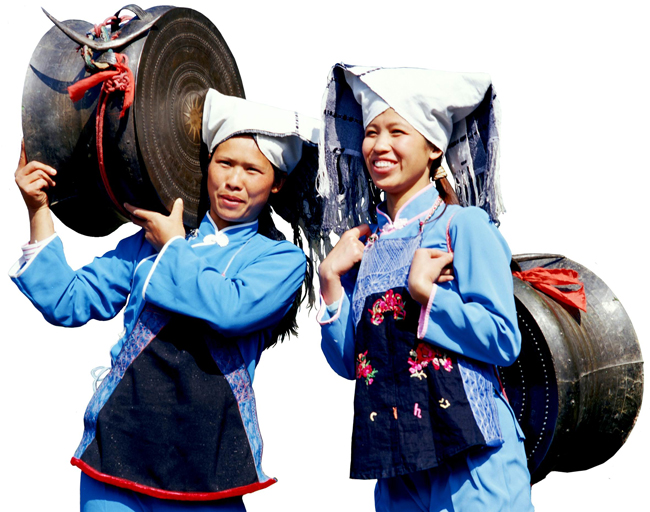 |
| Zhuang Nationality |
Architecture
Traditional Zhuang architecture is wooden and mud stilt house(Gan Lan干拦建筑,吊脚楼), which prevails among Miao, Dong, Yao, Zhuang and Han. Generally speaking, Zhuang people’s stilt houses nestle up against hills and face rivers and rice paddies. Setting off by luxuriant forests and crystal-clear streams, they breathe full of primitive beauty and emit a laidback air. Clustered in groups, Zhuang villages look quite imposing.
Zhuang architecture has many variants. In Congjiang County and Liping, Guizhou, they show strong Dong architecture influence. While in plain areas or towns, Zhuang architectures are sinicized. White washed walls, wood-brick structure and upturned eaves with delicate patterns, the defining elements of traditional Han architecture, are melded with traditional Zhuang style. Langzi Ancient Village is a fine example. To see the best preserved traditional Zhuang architecture, you have to drop by Longsheng Rice Terraces.
Approaching Ping’an Zhuang Village, Jinzhu Zhuang Village or Longji Ancient Zhuang Village in Longsheng, you can gain an insight into their folk residences. The first floor is occupied by livestock or used as mills or storage rooms, the upper floors are divided into living rooms, front halls, rear halls and balconies. Dashing out abruptly, balconies are places to enjoy sunshine, greet guests or do the needlework. The front halls are used to entertain guest or host celebrations, while side rooms and rear halls function as the living quarters. Zhuang architecture is anchored by a shine, the spiritual center, where offerings are presented to worship gods and ancestors. Fire pit is the place the whole family will gather together, eating and chatting. In Longsheng, Zhuang women enjoy high social status, because the housewife’s bedroom is the centerpiece. One peculiar phenomenon here is the co-existence of extremely conservatism and open-mindedness: husbands and wives do not share the same bedrooms in night, while single girls enjoy the ultimate freedom to date their sweethearts. Their bedrooms sit near the staircases, so their lovers can come to say “hi” conveniently.
On A: Drum Culture
Next article: Bronze Drum Culture
Already existing0Comment
Review all comments>>
Recommend
Hot Spot
Product


